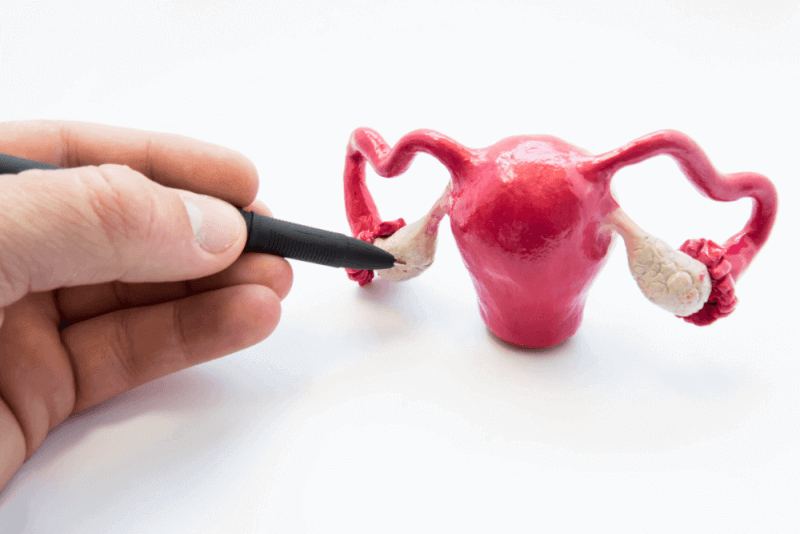What is Vaginismus?
Vaginismus, one of the female sexual dysfunctions, is also one of the most common issues experienced by women worldwide. Despite the belief that this condition only affects them and their hesitation to discuss it, Vaginismus is one of the easily treatable disorders. The reluctance of women to address this issue leads to delays in treatment, resulting in more severe problems and issues within couples.
The vagina consists of muscles. These muscles not only allow women to urinate but also to give birth. During sexual intercourse, the muscles in the vagina relax, allowing the penis to enter easily. However, due to certain psychological and physiological reasons, the muscles that should relax during intercourse fail to do so. The involuntary contraction of vaginal muscles causes women to experience pain and discomfort during intercourse. In some cases, penetration becomes impossible. This condition is called Vaginismus.
Symptoms of Vaginismus
- Discomfort or pain during vaginal penetration
- Inability to engage in sexual intercourse due to vaginal muscle spasms or pain
- Painful sexual intercourse
- Pain or fear during tampon or suppository use
- Stress before a gynecological examination
When it comes to Vaginismus, symptoms vary from patient to patient. However, the most distinctive symptom is the involuntary contraction of the vaginal muscles. Women cannot control or stop these contractions. The intensity of the contractions varies among patients, but they generally make sexual intercourse impossible.
Women with Vaginismus often experience issues not only during sexual intercourse but also when using suppositories or tampons. The primary problem they face is fear.
In some cases, the contraction of the vaginal muscles does not occur tightly enough to prevent the penis from entering the vaginal canal. Even though these women can engage in sexual intercourse, they still experience pain and discomfort during the act. This condition is called Dyspareunia. Additionally, muscle contractions in the vaginal area can cause burning sensations and severe pain in women.
Women with Vaginismus often feel stressed before sexual intercourse and gynecological examinations. This stress manifests itself through excessive sweating and trembling. If one or more of the symptoms mentioned above are observed, Vaginismus should be suspected.
Causes of Vaginismus
When examining the causes of Vaginismus, it is evident that there is no single cause. Vaginismus can result from psychological events and conditions experienced by women, as well as physiological reasons. In some patients, both physical and psychological causes may coexist.
Emotional Causes of Vaginismus
The following are among the most common psychological causes of Vaginismus:
- Excessive excitement
- Anxiety disorders
- Depression
- Witnessing parental sexual activity
- Being forced into first sexual intercourse by a partner
- Misinformation about the first night or hymen
- Fear of the partner
- Concerns about sexual performance
- Low self-esteem
- Trauma from gynecological examinations or vaginal interventions
- Fear of pregnancy
- Abortion
- Traumatic falls
- Stress
Physical Causes of Vaginismus
Although Vaginismus is often thought to be caused by psychological factors, there are also physical factors that can cause it. These physical factors include:
- Skin conditions like lichen sclerosus, psoriasis, and eczema
- Short vagina
- Vaginal septum
- Endometriosis
- Side effects of medications
- Inadequate foreplay
- Pelvic surgery
- Menopause
- Vaginal tears during childbirth
- Cancer
- Urinary tract infection
- Vaginal dryness
Types of Vaginismus
Vaginismus is not a condition present from birth. It can manifest in different forms at various stages of life. Therefore, the types of Vaginismus vary depending on when the issue arises during a woman’s sexual life.
Primary Vaginismus
Primary Vaginismus, also known as primary Vaginismus, occurs during a woman’s first sexual intercourse. It can also arise during a woman’s first gynecological examination.
Secondary Vaginismus
Secondary Vaginismus can occur years after the first sexual intercourse. It is often seen after traumatic events and is caused by physical changes in women. Other causes of secondary Vaginismus include sexual and relationship compatibility issues between couples.
Diagnosis of Vaginismus
To diagnose Vaginismus, it is essential first to consult an obstetrician and gynecologist. If necessary, the specialist may refer you to a psychologist specializing in sexual therapy or a surgeon.
The obstetrician and gynecologist will first take the patient’s medical history and then perform a pelvic examination. During the pelvic examination, details about when the problem was first noticed will be gathered. Determining the circumstances surrounding the issue helps to identify whether the cause of Vaginismus is physical or psychological. Additionally, the specialist may request various blood tests to check for diseases that could be causing Vaginismus.
It is common for women to feel anxious during the examination for Vaginismus diagnosis. Therefore, your doctor will do everything possible to make you feel comfortable. Patients can also try different positions or ask their doctor for more detailed information to feel more at ease during the examination.
Treatment Methods for Vaginismus
Contrary to popular belief, Vaginismus is a treatable condition. Although women with Vaginismus may avoid sexual intercourse or experience pain during it, their sexual desire does not decrease. Women can still enjoy sexual approaches and stimulation and achieve orgasm. However, if Vaginismus is not treated, women may experience a decline in sexual desire over time. This situation not only affects women but also their partners. Therefore, although Vaginismus is categorized as a female sexual dysfunction, solving the problem requires both partners to work together.
Due to societal taboos, couples may delay seeking professional help or try to resolve the issue independently. Ignoring the problem only exacerbates it. In some couples, forcing women into sexual intercourse can lead to more significant trauma and make the problem much worse. All these negative experiences can seriously impact women’s sexual lives and lead to other issues such as premature ejaculation or loss of sexual desire in their partners.
For these reasons, Vaginismus is not a problem that couples can resolve on their own. It needs to be systematically addressed with a treatment program developed by a specialist. The first step in treatment is accepting the condition and working together as a couple.
The treatment plans developed by specialists are directly related to the causes of the condition. Since the reasons for Vaginismus can be multifaceted, multiple disciplines may need to work together during treatment.
The primary goal of Vaginismus treatment is to prevent the involuntary contraction of the vaginal muscles. It is also necessary to reduce the pain and discomfort caused by these contractions. Finally, eliminating the fear associated with Vaginismus is a crucial part of the treatment.
Sexual Therapy
The most effective treatment for Vaginismus is sexual therapy. In addition to its high success rate, the short time it takes to see positive results makes sexual therapy a key step in Vaginismus treatment. The duration of sexual therapy sessions varies depending on the severity of the condition and the patients’ responses. If patients do not neglect the therapy, the success rate of sexual therapy is close to 100%.
Sexual therapy sessions can be conducted both individually and with partners. Various methods are used in sexual therapy, with progressive desensitization being the most effective. These therapies help patients understand and get to know their bodies, preparing them step by step for sexual intercourse.
Exercises
In some patients, sexual therapy alone is not enough to treat Vaginismus. Other treatment options are added to the treatment plan for these patients. One of these options is exercises. The results obtained through exercises are more effective and long-lasting. The recommended exercises for Vaginismus typically include Kegel exercises, relaxation exercises, and breathing exercises. These exercises help relax the muscles, allowing patients to engage in sexual intercourse without pain or discomfort.
Pulsed Radiofrequency (PRF)
PRF is a relatively new treatment method used in Vaginismus treatment and is primarily applied for nerve pain. Limited research on Pulsed Radiofrequency has shown positive results in treating Vaginismus.
Botox Application
Today, Botox applications are used to treat various conditions, including Vaginismus. During Botox treatment for Vaginismus, patients must be under general anesthesia. Botox works by paralyzing the vaginal muscles, preventing involuntary contractions.
How to Prevent Vaginismus
Vaginismus is a health issue that can occur at any stage of a woman's life. Therefore, it is important to take preventive measures against Vaginismus.
- Take time for yourself to reduce stress in your daily life. During these times, you can boost your self-confidence and mood.
- Stay physically active. Regular exercise or yoga can reduce stress and help relax your muscles.
- Avoid smoking. Smoking disrupts blood flow and can lead to muscle contractions.
- Avoid alcohol consumption. Alcohol decreases sexual desire in women and also affects sexual responses.
Vaginismus and Sexuality
The way the partners of individuals with Vaginismus handle the situation significantly affects the relationship. Forcing patients into sexual intercourse, lack of communication, punishing the partner by withholding sex, or using violence can negatively impact the relationship and worsen the patient’s condition.
Sharing sexual issues within a couple with others, such as extended family or friends, without the partner's consent can complicate the situation further. On the other hand, supportive attitudes from the surrounding environment can help the patient relax and respond to treatment more quickly.
There is a common misconception that individuals diagnosed with Vaginismus cannot have sexual intercourse. This belief stems from the idea that intercourse only occurs when the penis enters the vagina. Contrary to this sexist perspective, partners can be aroused and achieve sexual pleasure through various approaches and intimacy.
Vaginismus does not prevent pregnancy. It is a functional disorder that can be resolved with relatively short-term treatment, allowing pregnancy to occur after treatment.
Vaginismus and Psychology
Vaginismus is a condition that can happen to women of any age. Contrary to popular belief, it is quite common in society. Many women are ashamed to admit this condition, even though it is easily treatable. Vaginismus is one of the results of stress manifesting in the body. On the other hand, as a psychosomatic illness, Vaginismus also has effects on mental health, which include:
Low Self-Esteem
Individuals may experience low self-esteem due to their inability to satisfy themselves or their partners. As a result, they may feel less feminine, which can also lead to them finding themselves less desirable.
Impact on Family Life
Partners not knowing about this condition and being rejected for sexual intercourse can lead to frustration. This situation can seriously affect the family life of patients.
Depression
Feeling depressed is another expected outcome for patients. They often feel this way because they believe they are not understood. Additionally, forcing themselves into sexual intercourse despite the pain can result in trauma.
Differences Between Vaginismus and Dyspareunia
Dyspareunia refers to pain, discomfort, burning, and stinging experienced during sexual intercourse. While psychological factors can cause dyspareunia, physical problems such as dryness, masses, infections, and fibroids can also be contributing factors. Because both Dyspareunia and Vaginismus cause pain during sexual intercourse, they are often confused with each other. However, Dyspareunia is a term used to describe all types of pain experienced during sexual intercourse. Therefore, Vaginismus can be one of the causes of Dyspareunia. The primary difference between Vaginismus and Dyspareunia is that, in Vaginismus, the vaginal muscles contract involuntarily and excessively, preventing the penis from entering the vagina and causing pain. In contrast, in Dyspareunia, the contraction of the muscles narrows the vagina, leading to pain.













